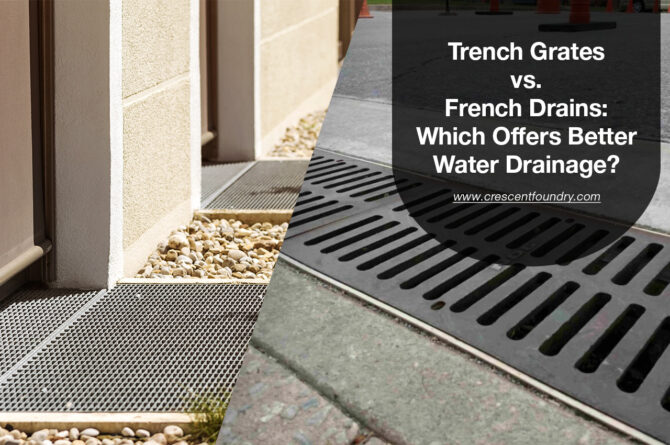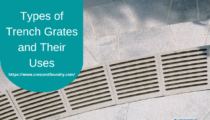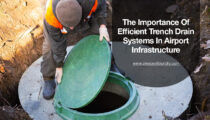While drainage grates are pretty much ubiquitous in the present-day…

Trench Grates vs. French Drains: Which Offers Better Water Drainage?
Standard options for controlling water on your private property or on roads are trench drains and French drains. While both successfully transfer water away, they have numerous differences. Follow this blog for more insights.
Trench Grates
Trench grate systems are underground systems that redirect surplus water from the ground. They are usually coated with concrete and inclined efficiently to use gravity. Steel grates or special filters cover the ditch drain to guard it from being blocked with trash. Trench drains are perfect for controlling groundwater before it can saturate the floor.
French Drains
French drain systems are underground systems incorporating a trench entirely of gravel and a slotted or perforated pipe. A layer of shielding, permeable material is positioned along the bottom and sides of the ditch after it has been dug to prevent soil and root penetration and on the pinnacle earlier than the topsoil is refilled. French drains absorb and eliminate groundwater and floor water from a unique location to a septic tank or particular drainage system. They are hidden behind soil or rocks, so they are out of view.
Which Offers Better Water Drainage?
The response to this question relies upon the particular demands of your home. Trench drains are beneficial for controlling floor water earlier than they can saturate the floor. In contrast, French drains seize and ship groundwater and surface water from a unique area to a septic tank or fantastic drainage device. If you are concerned about water on the surface, a trench drain is possible. A French drain can be the most widely recognised answer if you’re worried about groundwater or underground water.
In terms of offering better water drainage, the selection amongst trench drains and French drains is primarily based upon the best requirements of the property. Trench drains are extraordinary for regions where water can acquire and be a chance, like parking hundreds, sidewalks, and loading docks. They are also suitable for excessive-site visitors’ areas where water wants to be quickly and effectively redirected. On the other hand, French drains are typically a higher choice if you need a drainage tool that is much less visible or set up across the edge of your property. They are also appropriate for areas wherein groundwater is a hassle.
Also Read: Cast Iron Trench Grates: Making Drainage Systems Smarter
Other structures that give proper water drainage:
Channel Drain: A channel drain is a trench drain used to prevent water from accumulating on impermeable surfaces. It is embedded inside the pavement and facilitates the water before it pools. Channel drains are useful for coping with rainfall and may be used by myself or alongside different options.
Swale: A swale is a floor water drainage device similar to a trench drain. It transfers water throughout the grass, concrete, or specific material. Swales are beneficial for dealing with precipitation, specifically heavy rain, and may drain significant quantities of water away, particularly so that you can minimise floods and erosion.
Dry Well: A dry well is a subterranean gadget with a big hole full of gravel or beaten stone. It is supposed to accumulate water from a French drain or unique drainage tool and let it percolate lightly into the surrounding soil. Dry wells are beneficial for managing large portions of water, but they take quite some room and may be expensive to build.
Trench drains and French drains are very powerful in handling water going with the flow. However, they vary in structure and set-up. Trench drains are channels that are supposed to abruptly evacuate floor liquids and use gravity to direct ground-level water far from your property or essential infrastructure. They are frequently coated in concrete with a moderate slope to direct water away, and steel grates are hooked up over the pinnacle to defend those trenches from particles that could clog the drains. The installation method for trench drains includes figuring out which you need to dig, digging a trench, putting in an open-sided drain pipe, and overlaying it with a metal grate.
Also Read: Types Of Trench Grates And Their Uses
On the other hand, French drains are subsurface systems consisting of a trench entirely of gravel and a slotted or perforated pipe. A layer of protective, permeable fabric is located along the bottom and factors of the ditch after it is dug to prevent soil and root intrusion and on the pinnacle in advance, the topsoil is changed. French drains syphon water downhill from a website, which encompasses groundwater similar to floor water, and they’ll usually be installed throughout the edge of belonging. The set-up approach for French drains includes digging a trench, filling it with sand and gravel, and increasing it beneath the garden mattress.





